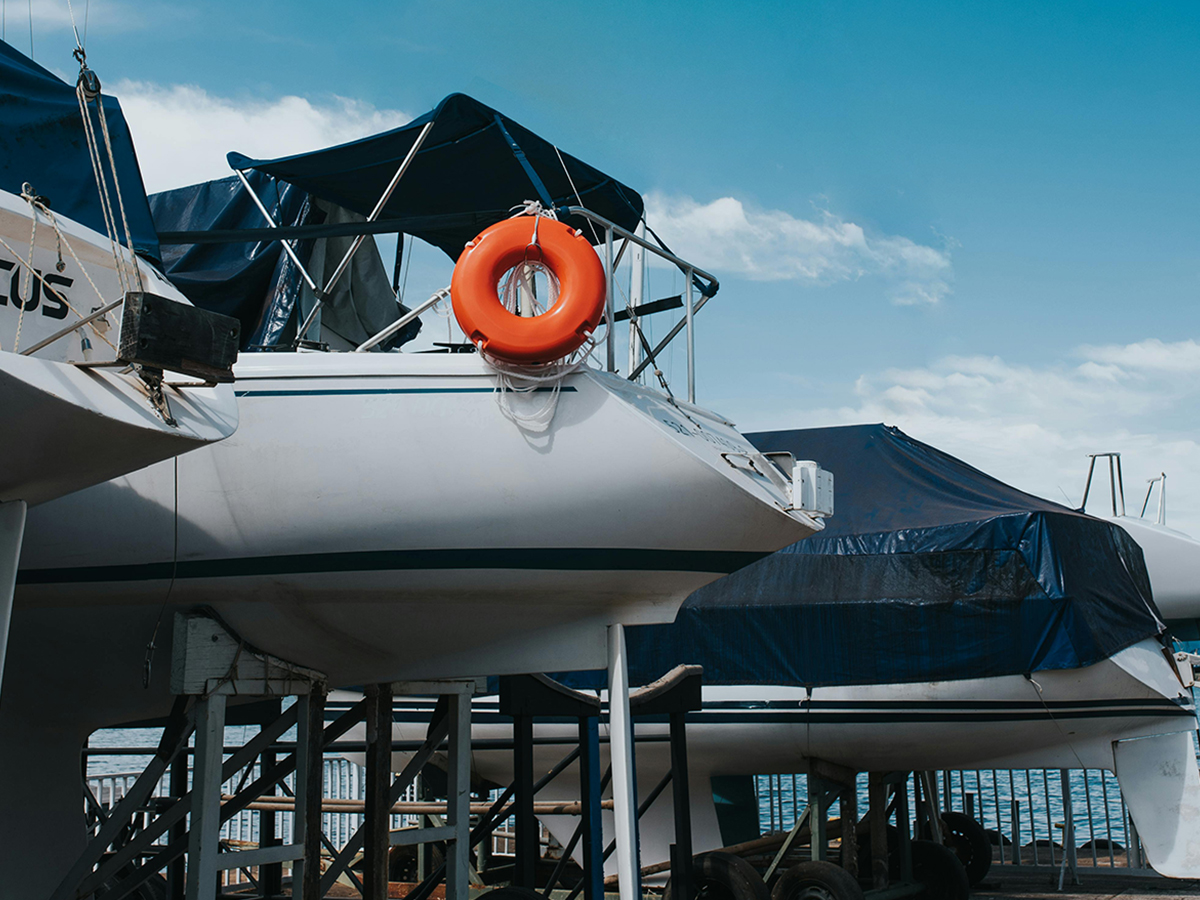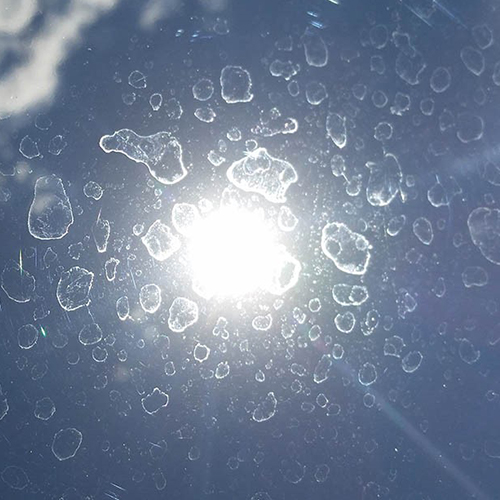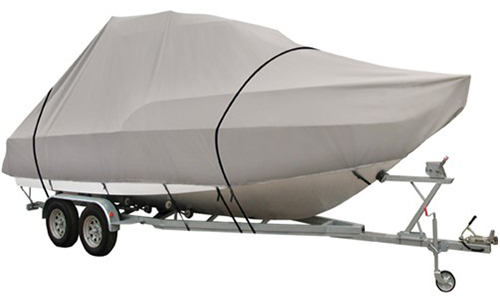Author: Boat Accessories Australia Date Posted: 14 May 2025

Luckily, Aussie winters aren’t as harsh as those up north - no frozen lakes or snow-covered decks here. But even so, it’s still worth taking a few simple steps now to make sure your boat’s ready to go when the warmer weather rolls back around.
Rinsing the outside of your boat and trailer thoroughly with fresh water will remove excess salt. A washdown pump kit can make this task easier. Pay particular attention to the parts of your trailer that are constantly submerged during launching and retrieval of your boat, like the leaf springs, wheel hubs and brakes.
For the fishermen out there, be sure to hose your boats out thoroughly to get rid of any fish residue and avoid nasty odours that will develop under your boat cover during the winter months. You might need a few brush head types for different areas of your boat.
Most boat trailers are made from galvanised RHS (rectangular hollow section) steel. As time goes on, it's common to drill extra holes for things like rego plates, wiring, or new accessories. The trouble is, these holes can let saltwater sneak into the frame, leading to internal rust and corrosion. When you’re hosing down your trailer, make sure to give those holes a good flush with fresh water to help keep things in good nick.
Boat trailers (once rinsed & dried) will also benefit from an application of a lanolin lubricant to corrosion-vulnerable areas. This lubricant is designed to stop electrolysis between different metals, as well as preventing oxidation and rust from forming on the surface.
Flush your engine's cooling system with fresh water in line with your engine manufacturer’s salt removal recommendations. This will minimise corrosion and overheating issues come spring.
Tip: Use a salt remover to rinse your boat/trailer and flush your engine. This will greatly enhance the removal of salt and adds a layer of protection to help minimise corrosion.
 |
| Corrosion of leaf springs, brakes and wheel hubs due to insufficient rinsing over time. |
Before giving your boat a clean and putting it into storage, it’s a good idea to take out any loose gear - things like life jackets, electronics, and tackle boxes. If you can, store them in your garage or shed. It’ll help keep them safe from theft and protect them from mould, moisture, and general wear and tear.
Top off your fuel tank with fresh fuel and add a fuel stabiliser. This will prevent your fuel going stale during storage (which can start to occur in as little as 30 days) as well as minimising any condensation inside the fuel tank. Check out our previous blog article on boat fuel tanks and systems to find out more.
Keeping your batteries maintained during winter storage is an essential step to getting your boating season started off on the right foot once spring arrives. Luckily, you have a few options.
Remove the batteries from your boat and store in your garage. Connect them to a battery charger that will give them a good initial charge (if required) and then automatically switch to a float/trickle charge to keep your batteries topped up. Be sure to match your charger to the type of battery you are charging. Using a charger manufactured for lead acid batteries to charge an AGM (absorbent glass mat) battery will cause damage to the battery.
Keep your batteries in the boat and connect a solar-powered trickle charger. These chargers will keep your batteries topped up without the hassle of removing heavy batteries from your boat.
If you have that all too familiar yellow/brown scum line around the waterline of your boat, remove it by applying some hull cleaner. Follow the instructions on the product packaging and be sure to wear gloves and a respirator for good measure. Prior to applying the hull cleaner to your boat, thoroughly wet down your trailer with fresh water to minimise the risk of damaging the galvanised coating.
Once the scum line has been removed, treat the outside of your boat to a good soap & water washdown with a good quality boat wash and microfibre wash mitt, or a soft brush on an extension pole. Rinse the soap off thoroughly and wipe dry with a chamois or clean microfibre cloth. Letting your boat air-dry will introduce water spots, particularly to stainless steel rails/deck fittings, windows, clears and dark coloured hulls.
Tip: If your boat is a little larger, a spray gun that can be hooked over a rail or cleat is makes the washing job easier. This multi-function engine flush mixer with spray gun includes a product dispenser attachment, which can be filled with salt-remover or a cleaning product.
Moving inside your boat, wipe over hard surfaces with suitable cleaning products to remove any salt and dirt marks. Be sure to check whether the product is designed for the surface type, e.g. plastic surface cleaner, aluminium cleaner, glass cleaner etc.
Clean your vinyl seating with a specialty vinyl cleaner and a soft brush or microfibre cloth. Follow up with a good quality vinyl guard/protectant. Once your boat is squeaky clean inside and out, let it dry completely before covering.
 Water spots are caused by minerals in tap water air drying on your boat. |
Take a close look at the hull and deck for any cracks, blisters, or general signs of wear. It’s best to sort out any problems now so they don’t get worse while your boat’s in storage. We stock a variety of fibreglass repair products to help with the job, and don’t forget - a corrosion eliminator is great for protecting electrical connections and stopping rust between different metals.
Once your boat is completely dry inside and out, it is time to cover it up and protect it from dust, pollutants and UV radiation. You can purchase a cover from our extensive range of boat, outboard & other covers once you have taken a few quick measurements of your boat. Aim to have your cover as tight as possible to prevent bugs and wildlife making a home inside your boat over winter.
If you have a problem with gulls making a mess on your boat cover, the StopGull Air seagull deterrent can be installed on the canvas through the Boat Vent 3 device to prevent gulls landing on the surface, whilst also aerating your boat’s interior. Use the StopGull Air Telescopic Support Pole as well if you need more height.
Boat covers are often made of breathable fabrics or have vents sewn in. This is essential to ensure that mould does not have an opportunity to grow whilst your boat is covered. One place mould does tend to grow is on your vinyl seating, but this can be fairly easily removed using a mould and mildew cleaner. Be sure to keep the cleaner away from the stitching to avoid damage.
If you only need to cover parts of your boat - such as the outboard motor, winch, chairs, tables or hatches, we sell separate covers for all of these.
For peace of mind, we recommend placing one or two moisture absorbers inside your boat should it remain covered for an extended period. This will absorb any excess moisture and significantly minimise mould growth.

A well-fitted cover will protect your investment, save you money and enhance your boat's resale value. |
Storing your boat in the back yard, a garage or a secure storage facility is the most ideal situation for security and insurance reasons. That said, we understand that it isn’t always an option, and your boat can often end up on the street or in the driveway. Also try to avoid storing your boat under any trees – falling branches may tear your cover.
Installing a trailer hitch lock is a great deterrent for thieves, but don’t forget that your trailer has wheels and can be relatively easily rolled away – never to be seen again. Further to the trailer hitch lock, we recommend installing a wheel clamp to one of your trailer wheels. A thief looking for an easy target will likely pass on your boat once they see how well it is secured.
Check all your trailer tie-downs to see if any need repairing or replacing. These retractable BoatBuckle ratchet strap tie-downs have great reviews & are ideal if you need new ones.
If your trailer is stored on a hill, engage your boat trailer’s hand brake (if fitted) or place a chock under each wheel to ensure your trailer stays put.
Last but certainly not least, check if your insurer provides a “lay up” option. This allows you to specify a period of time that you will not use your boat over the winter months. Taking advantage of this option can reduce your premium.
For more information on boat maintenance and accessories, please feel free to contact us.
Canopy up or down
By: Gabrielle on 24 January 2024We have been storing the boat with canopy up & it seems to be wearing at the highest point on the tubing. Is it better to store folded down. It is stored outside under a tarp
Boat Accessories Australia Response
Hi Gabrielle,
Thank you for your comment on our blog “How to Prepare Your Boat for Winter Storage”
I couldn’t really say if the wearing is because of leaving it up, however it’s probably is better to store folded down. I can only suggest to give it a try storing it like this and see if it makes a difference. Unfortunately once the canopy has been worn through, you’d have to patch it or fully replace it.
Sorry I cannot be of any further assistance.
If you have any questions, please let me know.
Thanks,
Alison